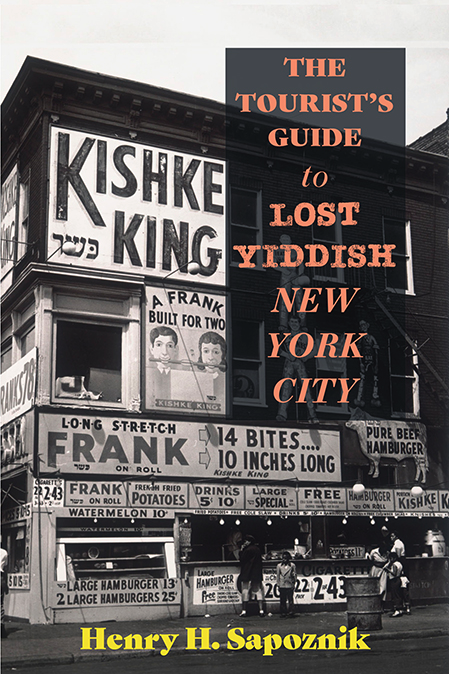Going to Market: Wallabout Market and the Vanished Landscapes of Food Distribution in New York City
By Malka Simon
Wallabout Market no longer exists. Its facilities were bulldozed by the Navy Yard in 1941 to make more space for wartime production, and Brooklyn’s wholesale operations moved to the Terminal Market in Canarsie. But Wallabout’s rise and fall still has much to teach us about the rhythms of the city and the urban patterns that unfold in response to even the most ephemeral of commodities.
Read MoreThe Gilded Age in a Glass: From Innovation to Prohibition
By Zachary Veith
In the early 20th century, bartenders at the world-famous Waldorf-Astoria memorized 271 concoctions. Scores of signature drinks were dreamt up in honor of people and events: the “Arctic” to celebrate Peary’s discover of the North Pole, the “Coronation” to commemorate King Edward’s ascension to the throne, the “Commodore” and “Hearst,” honoring business tycoons, and even the “Charlie Chaplin.” Imbibing at the mahogany bar aligned oneself with the wealth and tastemakers of America; crowds of Wall Street bankers like J.P. Morgan, celebrities like Buffalo Bill Cody and Mark Twain, and the high-society elites all enjoyed more than a few of the bar’s signature cocktails.
Read MoreThe History of Mexican Food in New York
By Lori A. Flores
Though post-COVID statistics will reflect restaurant closures, downsizing, or “ghost kitchens,” as of the summer of 2020 there were 27,556 restaurants operating in New York City, 977 of which were Mexican. To some, this latter number might not be surprising (and even seem low given the popularity of Mexican cuisine). Yet just a few decades ago, New York was a place where Mexican food was hard to find. It lagged behind other cities like Chicago, San Antonio, or Los Angeles that claimed larger Mexican-origin populations and a longer history of Mexican restaurants.
Read MoreDuties and Desires: The Brooklyn Eagle Cookbook, 1926
By Megan J. Elias
Community cookbooks were usually assembled by groups of women organized for a charitable purpose — restoring an old church, for example. These cookbooks can reveal many things about a community. By focusing on two sections in the book, “Household Hints” and “Tasty Dishes,” we can access the sensations of domestic life in Brooklyn in 1926, its rhythms and expectations.
Read More“Little Pittsburgh”: Creating an Industrialized Landscape in Hunts Point
By Sam Hege
Since the 1950s, New York City has relied on the South Bronx to handle the vital and taxing components of its processing and distribution infrastructures. This strategy began with the decision to relocate the Terminal Market from downtown Manhattan to the Hunts Point peninsula, and has since been used to justify the siting of waste transfer stations, prisons, and industrial processing facilities. This consolidation of waste and congestion to the South Bronx supported the emergence of Manhattan as a tourist destination and financial capital, embodied by the redevelopment of the Manhattan market space as part of the World Trade Center project.
Read MoreProhibition New York City: An Interview with David Rosen
Interviewed by David Huyssen
Today on the blog, editor David Huyssen speaks with David Rosen, independent writer and historian, about his new book Prohibition New York City: Speakeasy Queen Texas Guinan, Blind Pigs, Drag Balls and More (Charleston, SC: The History Press, 2020), his third book on transgression in American life, and second focusing on New York City.
Read MoreThe Jewel of Eastern Long Island:
Precarity and the Peconic Bay Scallop Industry
By Erin Becker
Peconic Bay scallops, argopecten irradians, are the jewel of the Eastern Long Island recreational and commercial fishery; their market rate can be as high as $30 for a single pound. The shellfish are a fall and winter delicacy throughout the Northeastern United States. Peconic Bay scallops have enormous cultural and economic significance.
Read MoreStirrings: How Activist New Yorkers Ignited a Movement for Food Justice
Reviewed by Nevin Cohen
It is impossible to read Stirrings: How Activist New Yorkers Ignited a Movement for Food Justice in the midst of the 2020 Democratic primaries without drawing comparisons between the tensions faced by the food justice pioneers profiled in Lana Dee Povitz’s history and the very different visions of social change articulated by the two candidates. Bernie Sanders’s case for the radical transformation of an unequal and unjust economic and political system seems diametrically opposed to Joe Biden’s more conservative approach, emphasizing incremental change within existing institutions. Their ideologies seem irreconcilable. But as the organizations profiled in Lana Dee Povitz’s compelling history of food activism illustrate, on the ground social change is more nuanced and complex than the Sanders/Biden schism suggests.
Read More




